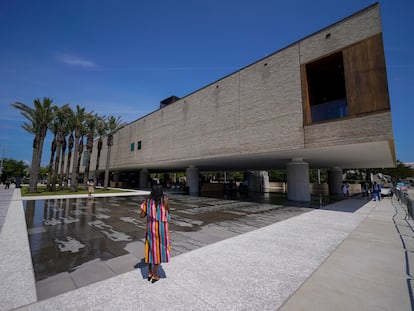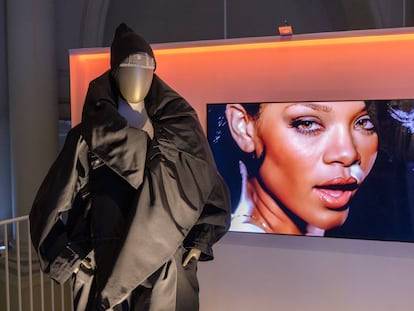The National Portrait Gallery rediscovers the history of the United Kingdom, now with more women
The London museum, closed for three years, reopens its doors with an architecture that enhances its own identity in the city and a more inclusive, contemporary approach to the collection
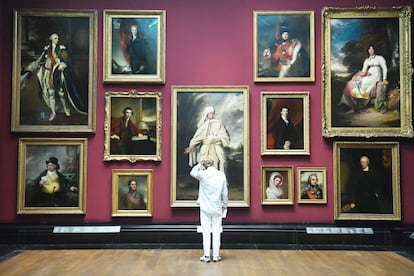
The UK has been needing a self-esteem boost. After Brexit and the decline that it brought; the disastrous management of the pandemic and the social and economic imbalance that it exposed; and the embarrassing nightmare of Boris Johnson’s mandate and his lockdown parties, it was more necessary than ever to reopen the National Portrait Gallery (NPG), closed for the last three years to undergo the most important renovation since its founding in 1896.
The poet W. H. Auden once called landscapes “but a background to a torso.” Art is the excuse, but the nearly 1,100 portraits on display in the new galleries are proof of the British obsession with the human image and with their own history. It is an opportunity for both them and their visitors to discover that, under the appearance of decline, lies a country in constant social, cultural and political turmoil.
Not all of those whose portraits were painted deserved to see their face hung on the walls of the Gallery. Many others —women, above all— demanded a space denied until now.
“The NPG curators have carried out a complete redistribution of the collection, from top to bottom, from the Tudor dynasty to the present day, through new acquisitions or commissions carried out in recent years,” explains Nicholas Cullinan, the museum director. “They have managed to completely change both the scope and the quality of many of the portraits that hang on the walls.”
The presence of women
For decades, the NPG was the poor sister of the overwhelming National Gallery, which dominates London’s Trafalgar Square. Its entrance was semi-concealed, on the side of bustling Charing Cross. Thanks to the joint work of the architectural firm of Jamie Fobert and Purcell’s team specializing in historic buildings —at a cost of almost €48 million— the museum has finally managed to impose its own presence in the city.
The entrance on the north façade, on St. Martin’s Square, has transformed the NPG into a new and exciting institution. The architects transformed the three rear windows into three huge access doors and a large patio to welcome visitors. Like Ghiberti’s Gates of Paradise in Florence, contemporary artist Tracy Emin has created 45 bronze bas-reliefs meant to represent “all women, through all time.” It is a declaration of intent that continues throughout all the galleries, and that begins in the lobby with the statue “Reaching Out,” a young black woman concentrating on writing a text on her mobile phone, alongside the busts of Nelson Mandela and the fourth Earl of Chesterfield.
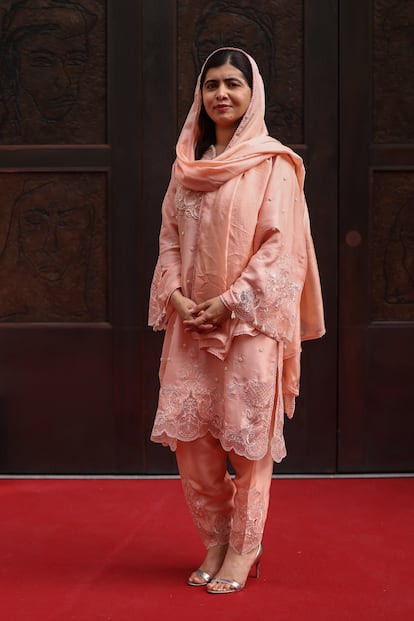
The architectural reconstruction of the building has allowed add to a narrow, sinuous museum up to 950 square meters more of exhibition space where before there were offices. New windows, new galleries and a wash of light transformed a place that needed to shake off a lot of accumulated dust.
Before the reopening of the museum, approximately 35% of the portraits exhibited in the galleries dedicated to the 20th and 21st centuries were of women or had been painted by women. The makeover could seem, in the eyes of some critics, like a forced maneuver to adjust to the times. The exhibited works, however, suggest the opposite: the urgent need to incorporate the relegated creativity of half the population into the collection. A whole new room is dedicated to experimentation with the self-portraits of dozens of women artists, and some of the new pavilions reflect the result of the alliance between the NPG and the Chanel Fund for Culture. Reframing Narratives: Women in Portraiture is a three-year project that aims to “broaden the representation of women in the collection of the National Portrait Gallery, and highlighting the often underappreciated stories of individual women who have shaped the history and culture of the United Kingdom,” explains the management of the museum.
Along an immense wall, the work “Work in Progress,” by pop artist Jann Haworth and collage maker Liberty Blake, features the figures of 133 women who are essential to understanding the United Kingdom. They include the warrior queen Boudica, the poet Sylvia Plath, the actress Judi Dench, Queen Elizabeth I, the nurse Florence Nightingale, the writer J.K. Rowling, epidemiologist Sarah Gilbert (creator of the AstraZeneca vaccine) and the beheaded Queen of England Anne Boleyn.
Number 119, in the last of the seven panels that make up the work, features the unknown silhouette of a woman, to fill the gap that Haworth has pointed out: “How to celebrate the achievements of so many women, if every time you search and you discover more and more you are forced to answer the same question: How is it possible that ‘X’ is not on this mural?’”
Classics and stars
With a delicate play of light and color, and with subtle indications on the walls that history is not what it has seemed to be for a long time —”Opening new conversations”; “Slavery and abolition”; “The dismantling of the British Empire”—, the NPG offers a new journey through the history of a fascinating country, which produced Henry VIII, Shakespeare, Winston Churchill, the Beatles, the Spice Girls and Adele. Through the portraits of its classics and stars it has depicted the richness of its diversity. The defiant and colorful image of the writer Zadie Smith, painted by Toyin Ojih Odutola, is the equally impressive reverse of the star of the opening: the “Portrait of Mai,” by Joshua Reynolds. The British painter’s masterpiece depicts the first Polynesian to set foot in the UK, who went on to become a legend of the Georgian era.
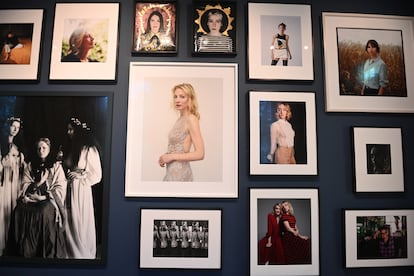
Oscar Wilde’s novel The Picture of Dorian Gray, told the tale of the search for eternal youth and innocence, with the scars of old age and evil transferred to the canvas. The film by artist Sam Taylor Johnson showing David Beckham sleeping peacefully; the Spice Girls jumping for joy; and the serious face of Manchester United footballer Marcus Rashford are part of a Cool Britannia far more suggestive than the last years of the Johnson era, whose unmistakable face, by the way, is not expected on the walls of the museum.
Sign up for our weekly newsletter to get more English-language news coverage from EL PAÍS USA Edition
Tu suscripción se está usando en otro dispositivo
¿Quieres añadir otro usuario a tu suscripción?
Si continúas leyendo en este dispositivo, no se podrá leer en el otro.
FlechaTu suscripción se está usando en otro dispositivo y solo puedes acceder a EL PAÍS desde un dispositivo a la vez.
Si quieres compartir tu cuenta, cambia tu suscripción a la modalidad Premium, así podrás añadir otro usuario. Cada uno accederá con su propia cuenta de email, lo que os permitirá personalizar vuestra experiencia en EL PAÍS.
¿Tienes una suscripción de empresa? Accede aquí para contratar más cuentas.
En el caso de no saber quién está usando tu cuenta, te recomendamos cambiar tu contraseña aquí.
Si decides continuar compartiendo tu cuenta, este mensaje se mostrará en tu dispositivo y en el de la otra persona que está usando tu cuenta de forma indefinida, afectando a tu experiencia de lectura. Puedes consultar aquí los términos y condiciones de la suscripción digital.
More information
Archived In
Últimas noticias
All the effects of gentrification in one corner of Mexico’s Colonia Roma
Palestinian reporter Youmna El Sayed: ‘My family told me I had to choose between being a journalist or a mother’
The new language of the workplace: Knowing how to ask AI questions is more important than using it
Russell Tovey: ‘I was advised many times not to come out, I don’t think there was many people who’d done that — and I feel really proud that I’m one of those that did’
Most viewed
- Christian Louboutin: ‘Young people don’t want to be like their parents. And if their parents wear sneakers, they’re going to look for something else’
- The low-cost creative revolution: How technology is making art accessible to everyone
- US sanctions against jailed cartel leader ‘El Marro’ highlight Mexico’s lack of control over its prisons
- Liset Menéndez de la Prida, neuroscientist: ‘It’s not normal to constantly seek pleasure; it’s important to be bored, to be calm’
- Cartels in Mexico take a leap forward with narco-drones: ‘It is criminal groups that are leading the innovation race’

